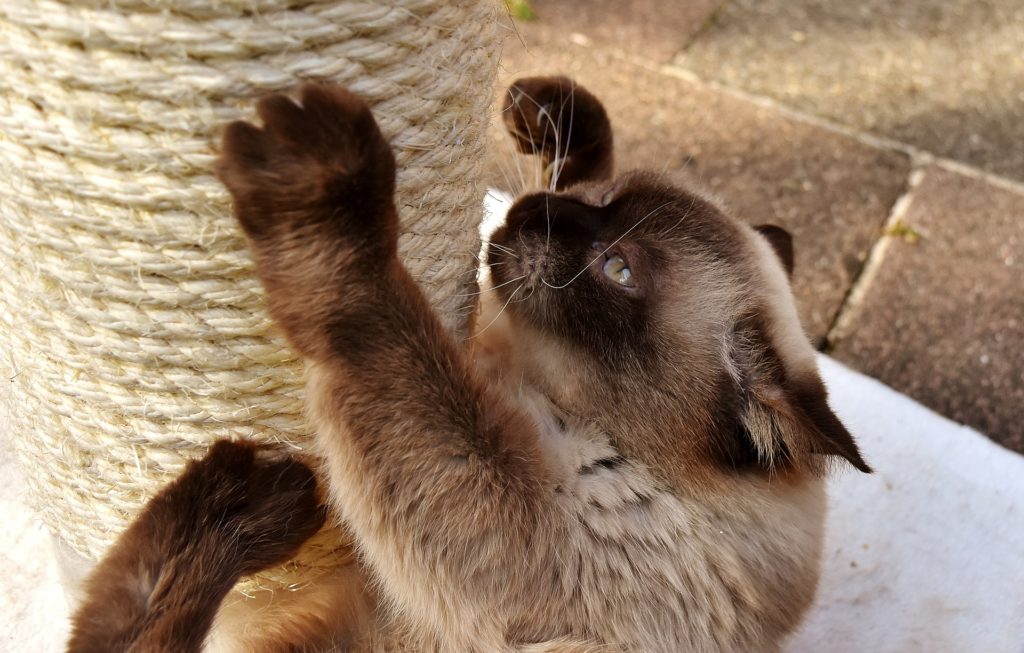Scratching posts help cats and cat owners alike. They give cats a satisfying place to scratch and they divert the wrath of cats' claws away from their owners’ furniture. Endless options are available in stores, but if you’re the DIY type, you can also make a scratching post for your feline friend on your own. This article goes over three strategies for doing so, providing the broad strokes of each approach and links to more detailed instructions.
PVC Pipe Strategy
One strategy involves a material-wrapped PVC pipe attached to a base. The YouTube channel Mother Daughter Projects has a video demonstrating this approach. The makers created a felt-covered base, attached and capped the PVC pipe, then wrapped rope around the pipe, starting at the bottom and winding upward. They then secured the rope with hot glue.
To follow their tutorial exactly, you’ll need a variety of materials and several tools, including a glue gun, drill and jigsaw or scroll saw. The makers recommend finding PVC pipe that is long enough to let your cat fully stretch out while scratching. And if they had a chance to do it over, they say they’d use carpet, not felt, on the base. To check out their step-by-step video, click here; to see their materials, click here.
Book Strategy
If you have a damaged coffee table book sitting around, you can follow the example on Hill’s and repurpose it by making it the backbone of a scratching board. You also need a cotton towel, sewing needle and thread. Make sure the towel is free of loose threads—these can cause unpleasant snags for your cat. Also, since scratching posts work better the more the cat can stretch, try to choose a relatively large book.
Essentially, you’ll fold the towel around the book, then pull it tight so that the surface is flat. After that, find where the seams meet on the back and stitch them together. The end product will sit flat rather than rise vertically. For more details and a picture of the process, plus several other ideas, visit this page from Hill’s.
Stair Banister Approach
Another approach, highlighted with pictures and instructions at Inscrutables, is to wrap sisal rope around a stair banister spindle. You’ll need enough rope to cover the spindle, plus glue and a tool for trimming the rope. This approach may be handy if you’re short on space or want to distract your cat from clawing the carpeting on your stairs.
Conclusion
Since cats thrive with multiple scratching posts throughout the home, don’t be afraid to try one or more of these strategies along with store-bought options. That way, your cat will have a full lineup of posts to scratch!


